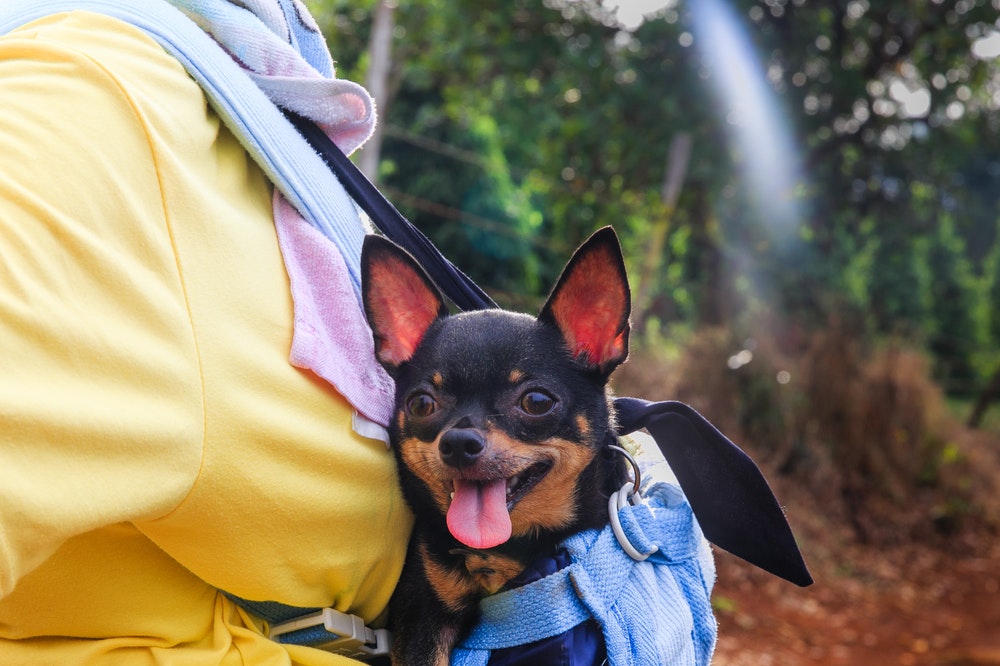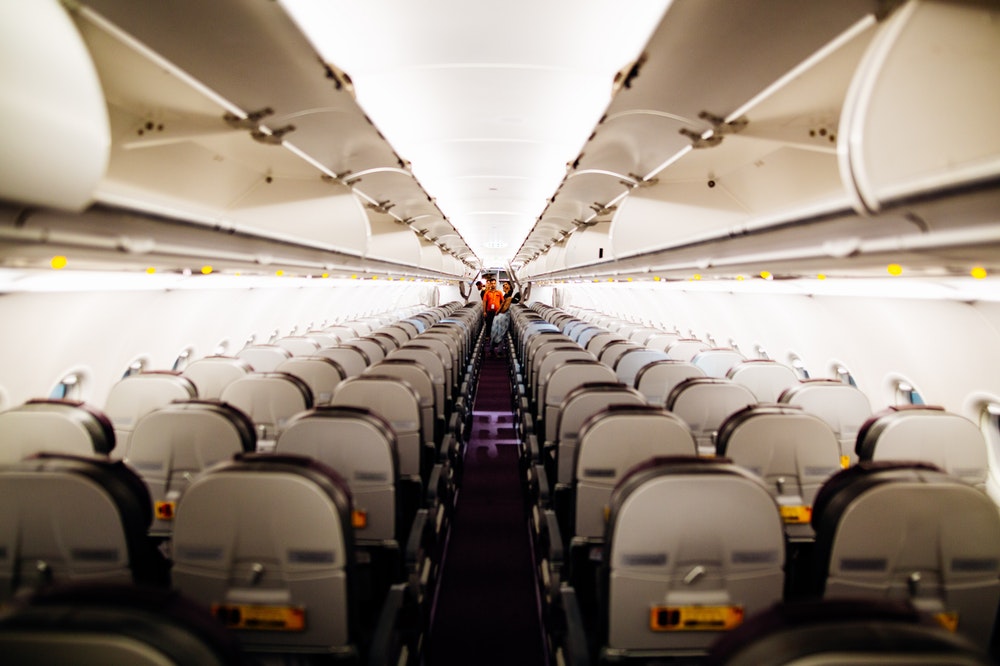Flying with a pet: Tips and tricks
Flying with a pet is possible, but it comes with its difficulties.
The biggest obstacle is that not all airlines offer that, and not everywhere it’s possible. There are airlines that allow pets, and airlines that doesn’t, as well as there are destinations that are less strict with pets, and others that are quite the opposite — very strict with that. As a result a research is required every time you plan on flying with your pet.
Also, it's rather costly and the tickets must be booked well in advance.
Continue reading to learn more about travelling with pets.

In the cargo hold or cabin
There are two options how you can take a pet on a plane.
You may put your pet in the plane’s cargo compartment or you can travel with him / her in the cabin. In some situations you may be given a choice, other times you may not.
Some airlines allow pets only in the cabin, there is no option to put them in the cargo hold. In these situations mostly your pet has to travel in a special pet carrier that can fit under the seat in front of you. In some cases, there is also a weight limit for your pet and pet carrier. The downside of this option is that only small pets can travel with you in the cabin. There’s so little space under the seat that even some cats may be too large to travel in the cabin.
For bigger pets cargo compartment often is the only option. Contact your airline, to find out if putting a pet in cargo hold is possible. You may need to book your tickets well in advance.

Flying with a pet: Tips
Here are some of our best tips for travelling with pets.
Because flying with a pet is possible, it just takes more work. There are some precautions you need to take, and mostly it requires more planning that normally.
1. Book a vet appointment before going on the trip
Is it even safe for your pet to fly?
Does your pet have some chronic illnesses that might put him at higher risk for problems during air travel? Is it bad for dogs to fly on planes? Find it out before making any bookings.
Book a vet appointment to rule out any underlying medical issues and get anti-rabies vaccination and anti-Echinococcus treatment (the latter — only if necessary). If you are from the EU and want to travel to another EU country, you will have to obtain a veterinary certificate called the EU Pet Passport. Your vet can issue this document.
Travelling from a non-EU country to the EU, you’ll need an EU animal health certificate.
2. Have all the documents ready
Find out what are the travel requirements.
For example, if you are from the EU, and want to travel with pets in the EU, you need to get a veterinary certificate called the EU Pet Passport. This kind of certificate is only valid for travel within the EU. All pets must also be microchipped and vaccinated against rabies (applies also to pets coming from a non-EU country). Additionally, many countries require pets to be treated against the tapeworm Echinococcus multilocularis.
If you are travelling from a non-EU country or territory, your pet must have an EU animal health certificate. It must be issued not more than 10 days before arrival. The certificate is valid for 4 months or until the anti-rabies vaccination expires, whichever happens first. In addition to the health certificate you must also complete and attach a declaration stating that your pet's relocation is for non-commercial reasons.
Each airline has their own requirements for flying with a pet.
Don’t forget to read the pet policy of your selected airline.
3. Book your flights well in advance
There are only a certain number of pet slots per plane.
That’s why, if you are planning to put your pet in cargo, it’s highly recommended to book your tickets well in advance. Especially if you do need to travel on specific dates.
4. Fly direct when possible
Flying is very stressful for your pet.
Stopovers will put your pet in even more stress since they'll get to experience loading, taking off, landing and offloading several times. To make it more bearable for your pet, fly direct. Yes, it might be more expensive but at the same time also less frightening for your pet.
5. Make sure your pet’s breed isn’t restricted
Due to pet deaths and safety concerns, some airlines restrict what breeds can fly.
Read the rules for flying with dogs carefully. For example, there are airlines that don’t allow snub-nosed breeds (pugs, bulldogs, etc.) due to respiratory tract issues. Find out if it’s not the case with your airline and your dog’s breed.

6. Buy a pet carrier
You can’t just carry your pet on a plane.
You have to place him in a special pet carrier no matter if your pet travels with you aboard or in the cargo hold. Check out what requirements and regulations apply to carriers, pet breeds and sizes. If you are taking your pet aboard, check whether it will fit according to the airline regulations. If you put your pet in the cargo hold, a hard shell-carrier is a must. It also should be large enough for your pet to stand, sit, and turn around in comfortably.
Use a marker to write your pet’s name on the carrier, and attach a photo of your pet to the outside of the carrier. It may help in case your pet escapes.
Before you fly, help your pet get accustomed to their carrier. Start the process in the weeks prior to your trip. It is recommended to go on a short outing with your pet in his carrier. Make sure this training is a positive experience and reward your pet with treats.
7. Buy identification cards for your pet
Make sure your pet is wearing a collar with an identification tag.
Use a marker to write your pet’s name on the carrier, and attach a photo of your pet to the outside of the carrier. So in case of escape, your pet can be located and returned to its crate.
8. Pack all your pet's necessities
That is, if your pet is travelling with you in a cabin.
In this case make sure you pack all your pet's necessities.
- A chew toy (but avoid squeaky toys on a plane) — for your pet to feel safe
- Old t-shirt that smells like you — for your pet to feel safe
- Familiar blanket — to keep your pet warm and comfortable during the flight
- A muzzle — some airlines require your dog to be muzzled when traveling in the cabin
- Food and snacks
- Water and a portable water bowl
- Extra collar with contact information
- A couple of leashes
Don’t forget to fill up your pet’s water bowl or bottle after you have gone through the security check. So you can give your pet some water during the flight. If you want to carry wet pet food, note that less than 100 ml (3.4oz) per package is allowed in carry-on. If you carry more, pack it in your checked baggage.
Solid (dry) pet food is allowed in both carry on and checked baggage.
9. Do not feed your pet before the flight
If your flight is during the day, do not feed your pet in the morning.
Make sure not to feed your pet some 5-6 hours before the flight, as that might cause nausea and other complications during the flight. Also, limit the amount of water intake before departure. It will decrease the need to pee during the flight. But do not forget to give hime some water during the flight, as flying will dehydrate your pet, just like dehydrates humans.
If your pet travels in the cargo hold, leave some ice cubes in his bowl. So it won’t splash around during loading and takeoff, and will provide some source of water. Also, attach a small, durable bag of dry food to the outside of the crate. So the airline staff can feed your pet during long flight or layover.
10. Take your dog on a long walk before your flight
Take your dog on a long walk before your flight to stretch his legs.
You won’t be able to walk your dog in the airport. Airports require your dog to be in a carrier. Dogs on leash are not allowed in the airport. Also, a long walk will leave your dog tired enough to take a nap during the flight. The trip will be less stressful for your dog, if he sleeps on the plane.

11. Line your pet carrier with a potty pad
In case “accident” happens.
12. Arrive to the airport in time
Arrive to the airport a bit earlier than usually.
You should allow for extra time, so you don’t end up rushing. Also ask airport staff for a possibility to board early. If you are travelling with your pet in a cabin, you might be eligible for early boarding.
13. Don’t give your pet tranquillisers
Not without consulting a vet first.
It might be a bad idea to give your pet tranquillisers before the flight! As meds like that can cause health issues during the flight. If your pet is really nervous, you may use natural (herbal) solutions to make them less anxious, but not sedated. But first, you need to consult your vet.
14. Look for a pet relief area before you fly and during the layover
Find out if there’s a pet relief area in the airport you are traveling from / to.
Unfortunately pet relief (pet toilets) areas are not yet a common sight at European airports, but some airports in Europe do have them, one great example being newly built Istanbul Airport (IST). You should let your pet use the pet toilet before heading to the gate. Also it’s important to take your pet “to use the bathroom” before you go to the airport, just in case you don’t get another chance.
Have a safe trip!